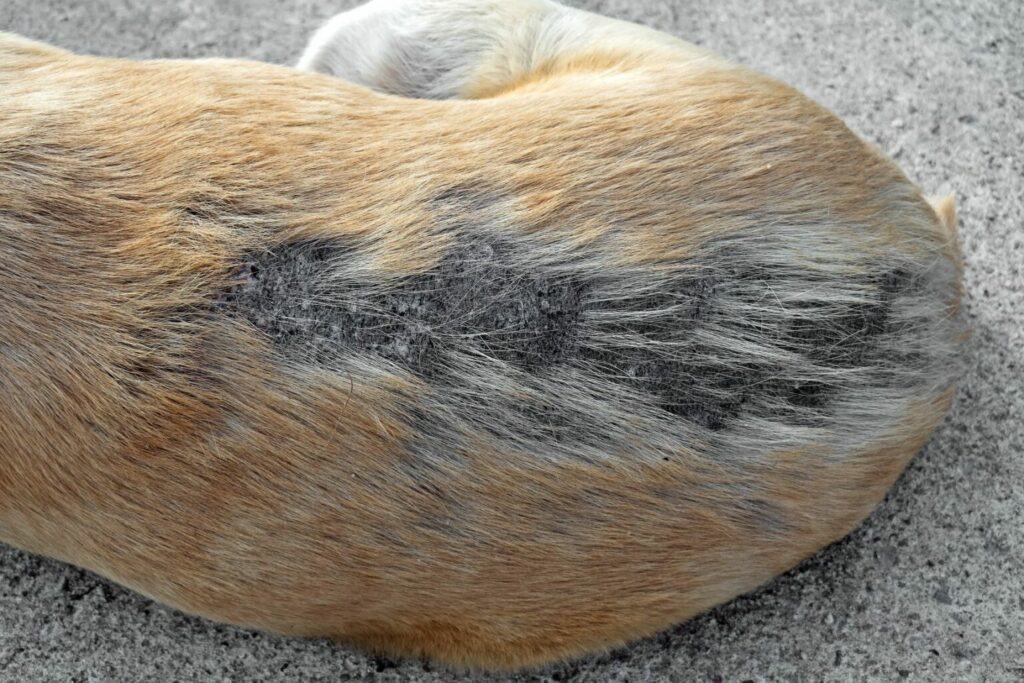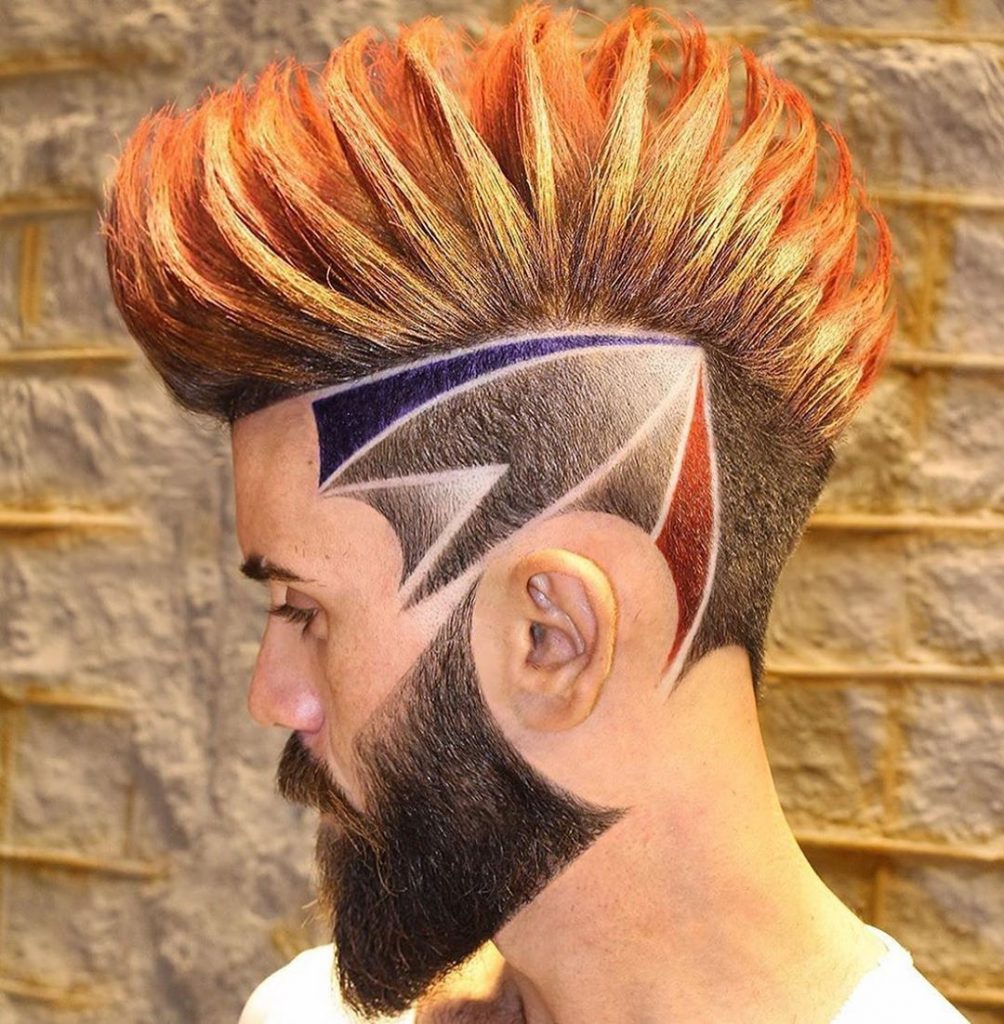Table Of Content

For health-related questions, always consult your veterinarian, as they can make the best recommendations for your pet. Older or less mobile dogs are more prone to pressure sores, caused by the pressure of lying in one spot for an extended period of time. These sores usually show up on a dog’s hip, elbows or sides and can become a chronic condition, much like bedsores in humans. Hair loss due to hypothyroidism can occur anywhere on the body and doesn’t usually cause itching or redness of the skin. This occurs most often in middle-aged medium to large breeds and can be determined via a vet-administered blood test.
Seasonal Alopecia in Dogs
A very common cause of hair loss in dogs is an infestation by parasites such as mites, lice or fleas. In particular, if your dog is losing hair around its neck and tail, there’s a high chance it’s due to fleas. These tiny parasites can rapidly infest your dog and irritate their skin; this leads to intense scratching, which in turn can cause hair loss. Any skin condition your dog has, including eczema or dandruff, can eventually lead to hair loss. If your dog is uncomfortable or their skin is causing them distress, they’ll try to alleviate this by scratching or licking themselves. Over time, this can lead to hair loss as specific areas of skin are weakened and their coat pulled out.
Cushing’s Disease
12 best pet hair removers, according to experts - NBC News
12 best pet hair removers, according to experts.
Posted: Tue, 06 Jun 2023 07:00:00 GMT [source]
Also, many (if not most) causes of alopecia are ongoing conditions that will need periodic medications or other treatments. Understanding this before you even make the vet appointment will go a long way in saving you from frustration if symptoms return in the future. Hair loss may need to be treated more than once, depending on your pet’s predisposition to skin infections.

Can Vitamin Deficiency Cause Hair Loss in Dogs?
Always administer treatment according to the veterinarian’s instructions. Follow up appointments may be necessary to ensure the problem is resolving and any infection is clearing. Monitor your pet’s skin and hair regrowth and communicate any changes or concerns to the veterinarian so they can adjust treatment accordingly. Depending on the diagnosis, a variety of treatments are available for dog hair loss.
Pressure sores develop when friction builds up on certain areas of your dog’s body for prolonged periods of time. Excessive rubbing or pressure affects the skin’s ability to heal itself and it reacts by becoming thicker over time. Take a look at the causes of a dog losing hair and find out how to help your furry friend. For example a bald dog that’s a Pomeranian may well have Alopecia X, a condition for which there’s not recognized treatment. For these little guys, keeping the skin in good condition and wearing a woolly in winter is the best compromise. Happily, for a dog losing hair the outlook is usually rosy (or hairy!) Correct the triggering problem and their coat should plush up again.
Parasites, Including Mange
This is due to allergens in the environment or a food allergy. Itchy skin is a common symptom and it’s the excessive scratching or licking which leads to dog hair falling out. Depending on your dog’s breed and coat type, you may need to brush them daily or a few times a week to help remove loose hair and prevent shedding. The type of lice found on dogs is not the same species found on humans, and they are spread from infected dogs, overcrowded housing, infected grooming tools and poor sanitation.
When should I take my dog to the vet for hair loss?
If your dog has a hormone imbalance, supplements can stop further hair loss and may actually help your dog regrow hair. Vets can run tests to determine if hormone treatment will help the problem. Hypoallergenic breeds, such as poodles, bichon frises, and schnauzers, are known for shedding less and may be a good option for those looking to minimize dog hair fall. Regular grooming, including brushing and bathing, can help remove loose hair and prevent it from ending up all over your furniture. You can also use furniture covers or blankets to protect your furniture from shedding.
Symptoms are typically seen on your dog’s skin where less hair is present. Should hair loss be occurring outside of seasonal shedding, you will want to schedule an examination with your veterinarian to determine what is leading to your dog losing her hair. Food allergies can only be diagnosed by running a food trial for a minimum of eight weeks. If the underlying cause is allergies and they are treated properly, your dog's hair should regrow and the itching should stop. Dogs can also contract ringworm, a fungus that causes hair loss and small areas of infection (no, it's not actually a worm). Red, itchy or scaly patches are cause for a trip to the veterinarian.
Hormonal hair loss in dogs
"Drugs are a big part of a vet practice in that we want to do things that take stress off of our animals. It's better living through chemistry." Purina formulates this daily probiotic supplement for dogs that display general anxiety in the form of pacing, spinning, whining and/or barking. The brand says its proprietary strain of probiotics can help calm your dog, but there is no clinical study on it. We like that the powder is simple to sprinkle over your dog's regular food.
Other potential options include aloe vera, vitamin E, and coconut oil. Ideally, you will consult your dog's vet before treating any skin conditions. One of the most common treatments for losing hair in dogs is medicated shampoos, but some natural remedies can also work. You should, however, consult your vet, especially in the case of extreme hair loss or other symptoms.
A puppy’s weak immune system may struggle to control infections that an adult dog would see off. Puppies and senior dogs may shed more than adult dogs due to hormonal changes and age-related factors. Adjusting your grooming routine to accommodate your dog’s age can help manage shedding. Sarcoptic mange is the result of an infection with the Sarcoptes mite. You will observe significant itching, self-trauma, papules, crusts and scales as well as hair loss. Should your dog have ringworm you may observe scaliness, crusty areas, pustules, some itching and hair loss.

Sometimes dogs that are extremely bored or anxious will bite at their own fur, pulling it out, and damage the skin resulting in hair loss and wounded, scabby skin. You can also use a hydrocortisone spray applied directly to specific itchy or hot spots. Avoid using human shampoos and hair products on your dog, since they often contain ingredients that can seriously irritate your dog’s skin.
Parasites such as fleas and mites living on or within your dog’s skin can result in hair loss and scabs. These small insects feed off of your dog, damaging the skin and hair follicles in the process. A dog losing hair in patches with scabs is a problem that many owners come to see us about at the clinic. No owner wants to see their dog’s beautiful hair falling out, let alone see their dog’s skin all scabby. In this article, Dr. Alex Crow covers the most common reasons & share tips to help your dog. To understand alopecia in dogs, you need to know how canine fur grows.
These can also include allergic rashes, which are separate from allergies. Again, the treatment of this infection depends on its severity, making it a dog-by-dog case. The vet will recommend long-term medications to control the condition whenever it reaches a severe stage, often generalized and not sporadic. Mange can either be localized, only affecting specific areas of the dog's skin, or it can be generalized and affect the entirety of your pup's body. This medication comes with dangerous side effects, which is why your veterinarian will wait until it is necessary to specify it rather than using it as a preventative measure.
Flea preventatives are an important step in protecting your dog and your home from infestation. If you suspect your pooch has fleas, schedule an appointment with your veterinarian so they can prescribe medication to treat the itch and kill the fleas quickly. At-home remedies include coconut oil, apple cider vinegar, and a flea comb. There are several reasons that dogs may experience bald patches. Allergies are prevalent, including environmental and food ones.

No comments:
Post a Comment